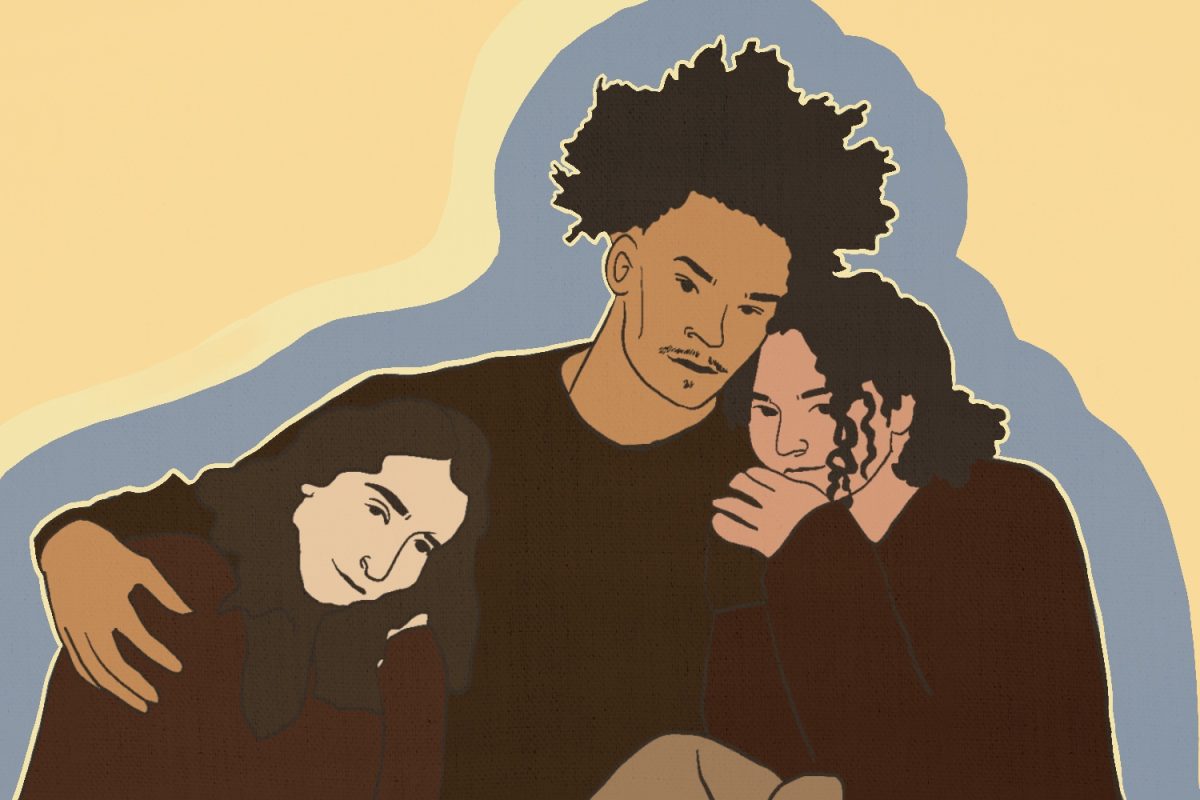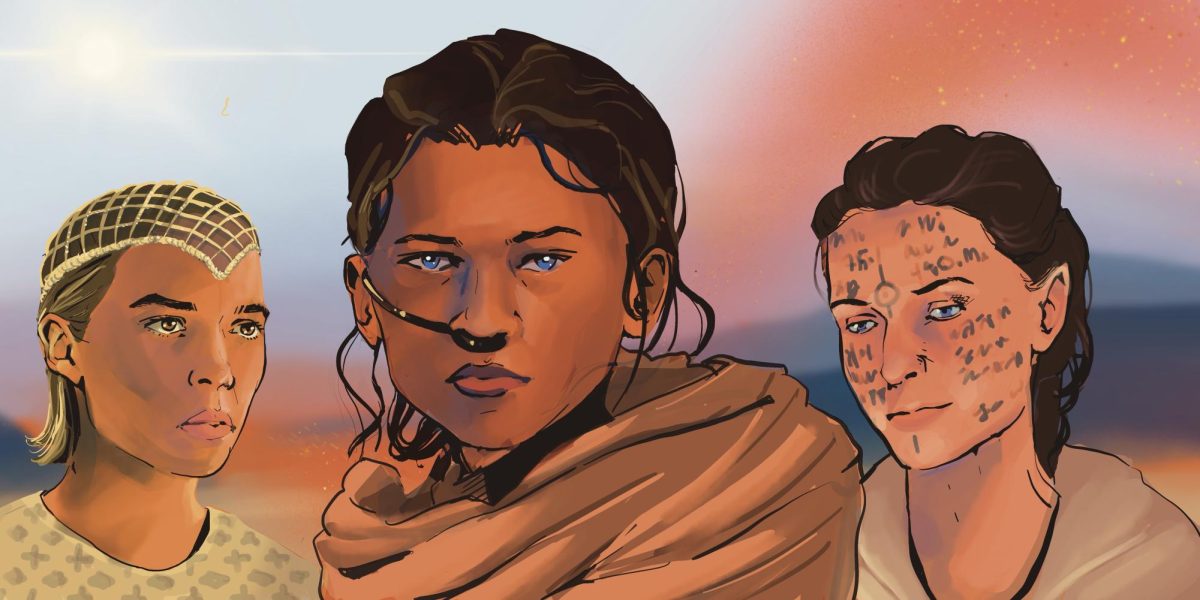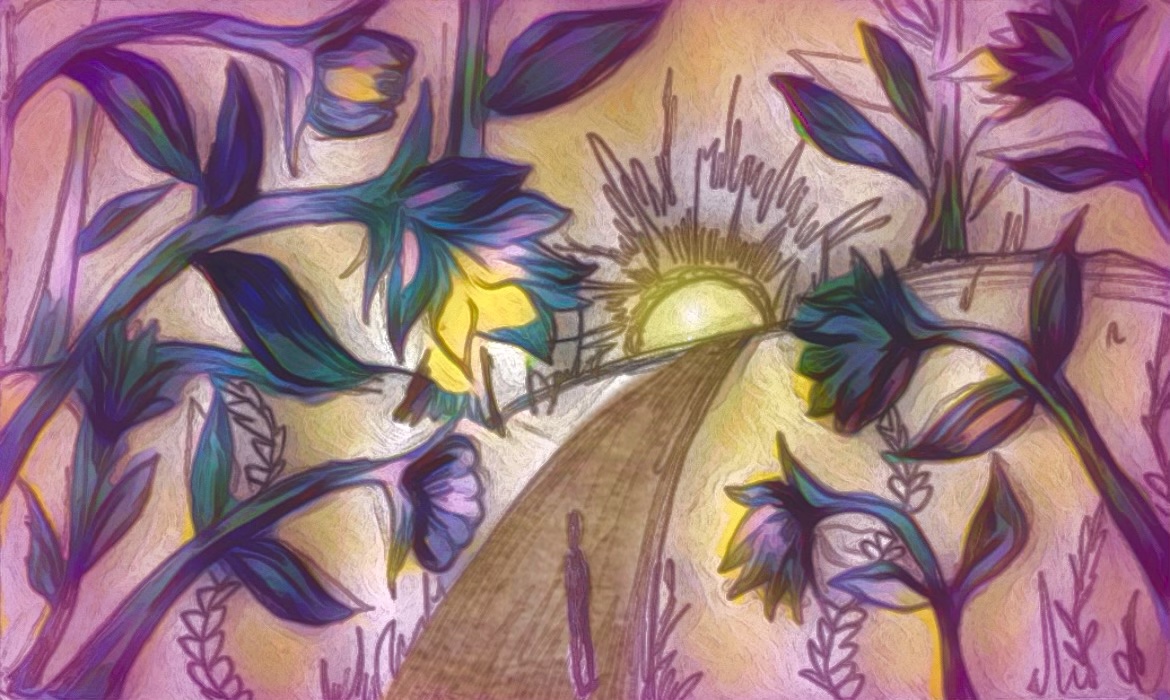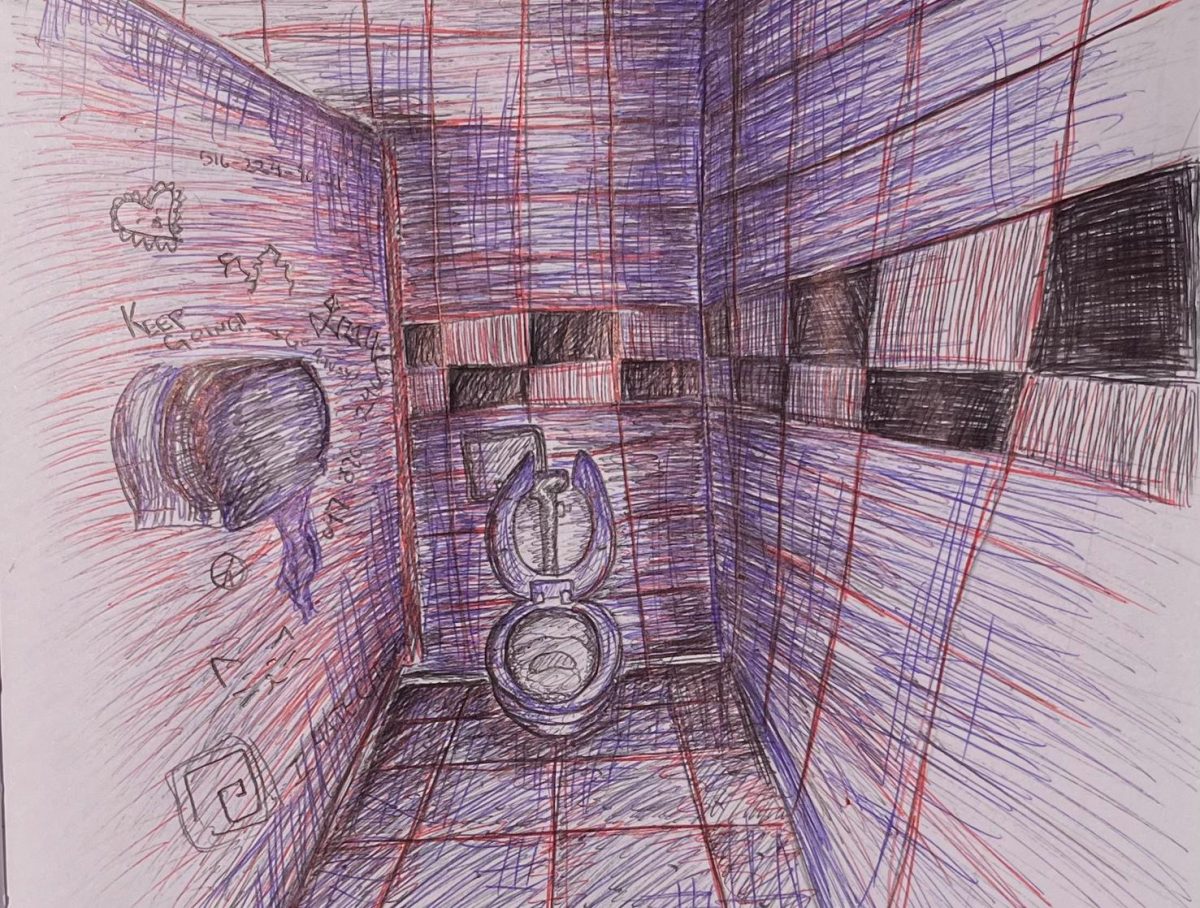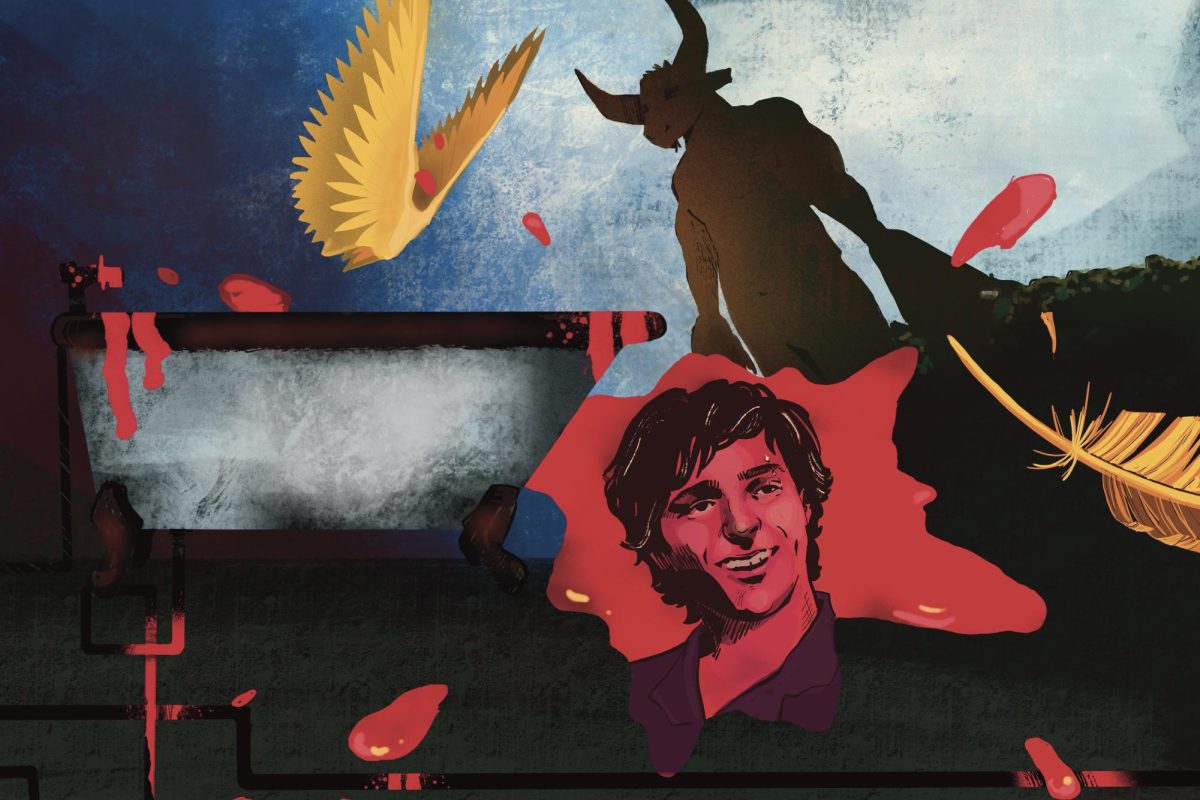As the lights dimmed for the Saturday matinee at Royal Tyler Theatre the audience marveled curiously at what lay beyond the garbage-bag curtains that blocked the stage. Then the opening chords of “Aquarius” rang out and fluid shadows of dancers projected onto the drapery. A member of the “Tribe” ran to the back of the auditorium to stealthily lift the wall between the audience and the actors, revealing a cast of hippie-clad characters powwowing around the stage.
Long hair, colorful beads, unwieldy bellbottoms, fringed vests and a bit of nudity all set the stage for the opening acts. One realizes quickly when watching Hair that the usual hierarchy of cast members does not have a place here. All twenty-four actors remain visible on stage throughout most of the performance. There are eight parts given specific titles, but the other sixteen members are part of the so-called “Tribe.” This egalitarian set-up is quite refreshing to see because all of the cast take part in almost every song and dance; this lends the audience a great many places to focus their attention without blandly staring at one lead star.
Hair was created in 1965 by James Rado and Gerome Ragni who were actors living in New York City at the time of the anti-Vietnam movement. Rado and Ragni studied this youth movement and created the outline of a script that began to run at La Mama Experimental Theatre Club. Galt MacDermott was commissioned to write the score for the play and by April 29th, 1968 Hair opened on Broadway at the Biltmore Theatre where it ran for 1,472 performances.
At a time when social and political conformity was at a high, Hair made a progressive step by breaking a lot of censorship barriers in the theatre realm. For one thing, the “fourth wall” that separates the actors from the audience was dismissed, and allowed the cast to interact with the audience thereby adding elements of improvisation. Additionally, the nude scene at the end of act one was stunning and shocking in American theatre at the time.
Although UVM’s theatre department opted to omit the nude scene, they still portrayed Hair in the revolutionary light that it deserves.
The pot smoking scenes, the orgy scenes, the free love, the draft dodging, the homosexuality, the multiculturalism and the anti-war sentiments are all saturated in each and every scene through expressive choreography and fantastic music. The play is without a strict plotline, but instead adheres to a central theme of hippie non-conformity in 1960s America.
The students that participated in this production clearly had a large task in front of them: to perform an ideological, anarchic, historic and revolutionary play in a time when the youth of today are faced with heightened conformity once again. This production of Hair was successful in portraying these struggles in the energetic light and power of Youth.












